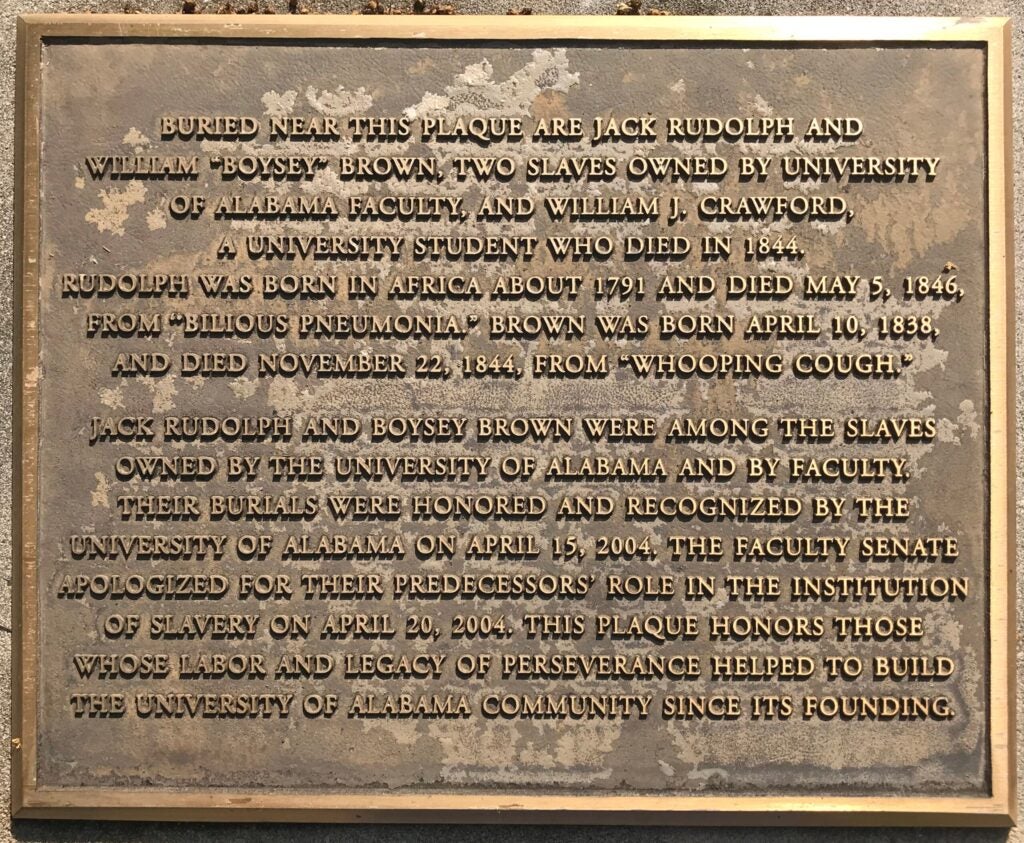The History of Enslaved People at UA, 1828-1865
During the academic year 2021-2022 the Task Force Research Group completed a comprehensive assessment of University of Alabama Administration Records for the period up to 1865. Part of this project was to ensure that all materials pertaining to slavery at the university were identified. Another crucial goal was to transcribe the contents of the main record sets from this time. Most important of all, however, was identifying as many of the enslaved individuals who labored on UA’s campus, or who were enslaved by faculty and college presidents, as possible and recording those names, and the documents associated with them, in a digital history project. The History of Enslaved people at UA website acknowledges and memorializes these individuals by including their names. It also includes narratives of the lives of some enslaved people who lived and labored on UA’s campus.
Created by Dr. Hilary N. Green, this tour seeks to shed light onto the lives, experiences, and legacy of the many enslaved men, women, and children who lived, worked, and even died at The University of Alabama, 1828-1865. There is also a self-guided shorter tour (approximately 45-60 minutes) available online as a mobile friendly option. Following Dr. Green’s departure from UA in 2022, Black Faculty and Staff Association (BFSA) Ambassadors now host Hallowed Grounds tours.
Created by Dr. Meredith Bagley, this alternative campus tour focuses on Race & Memory at UA. Centering the experiences of Autherine Lucy (who broke UA’s color line seven years before Vivian Malone and James Hood registered for classes and prompted Governor Wallace’s so-called “Stand in the Schoolhouse door”), this self-guided digital tour introduces viewers to a remarkable woman and the events and legacies of February, 1956.
A number of historical plaques on The University of Alabama’s campus mark locations and events of significance.

Transcription
Buried near this plaque are Jack Rudolph and William “Boysey” Brown, two slaves owned by University of Alabama faculty, and William J. Crawford, a University student who died in 1844.
Rudolph was born in Africa about 1791 and died May 5, 1846, from “Bilious Pneumonia.” Brown was born April 10, 1838, and died November 22, 1844, from “Whooping Cough.”
Jack Rudolph and Boysey Brown were among the slaves owned by The University of Alabama and by faculty. Their burials were honored and recognized by The University of Alabama on April 15, 2004. The UA Faculty Senate apologized for their predecessors’ role in the institution of slavery on April 20, 2004. This plaque honors those whose labor and legacy of perseverance helped to build The University of Alabama community since its founding.
Antebellum Era
Desegregation Era
Developed by the Tuscaloosa Civil Rights History & Reconciliation Foundation, and edited by Dr. John Giggie, this self-guided tour, with map and descriptions available in pamphlet form and online, covers local civil rights history back to the antebellum period, a story that often intertwines with that of the University.